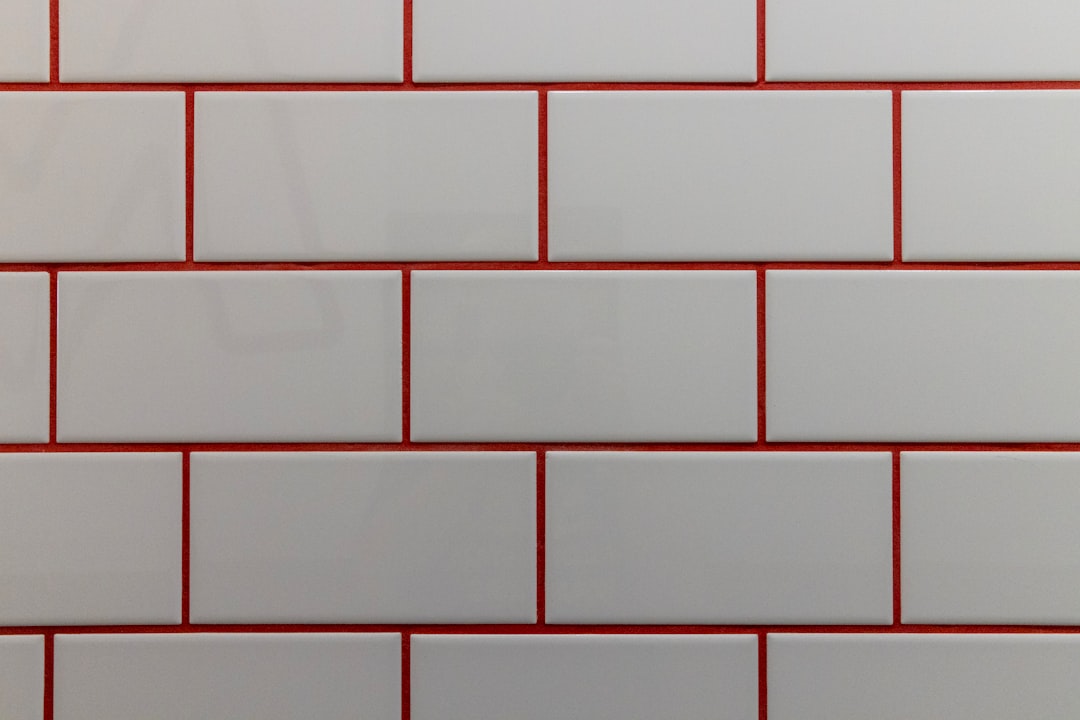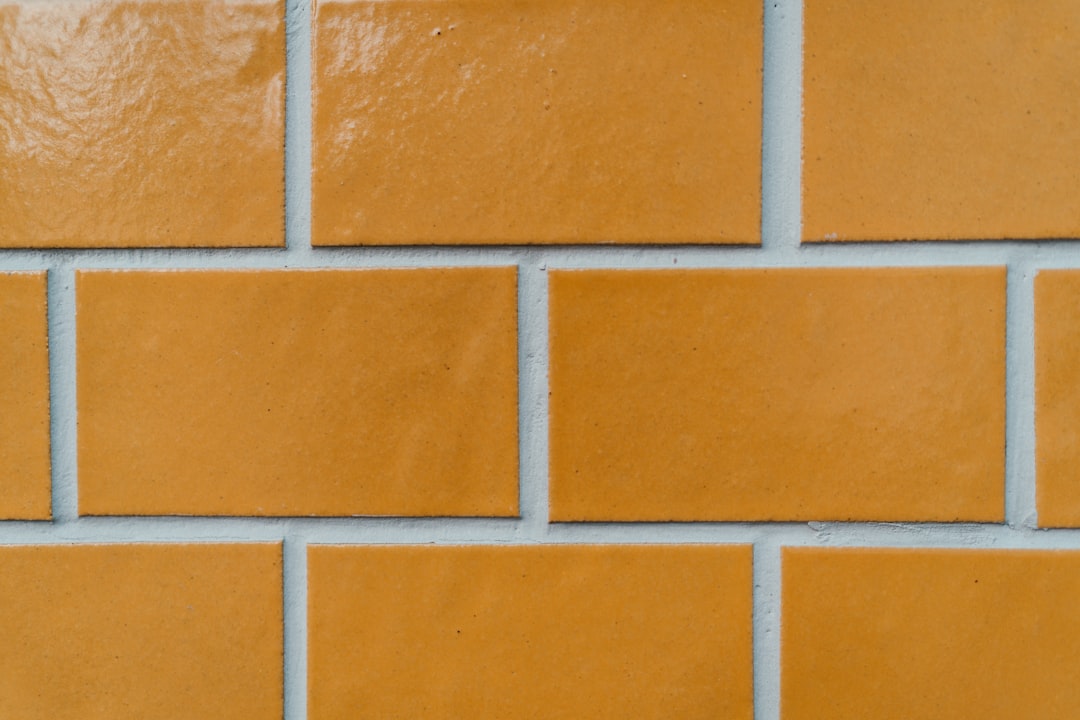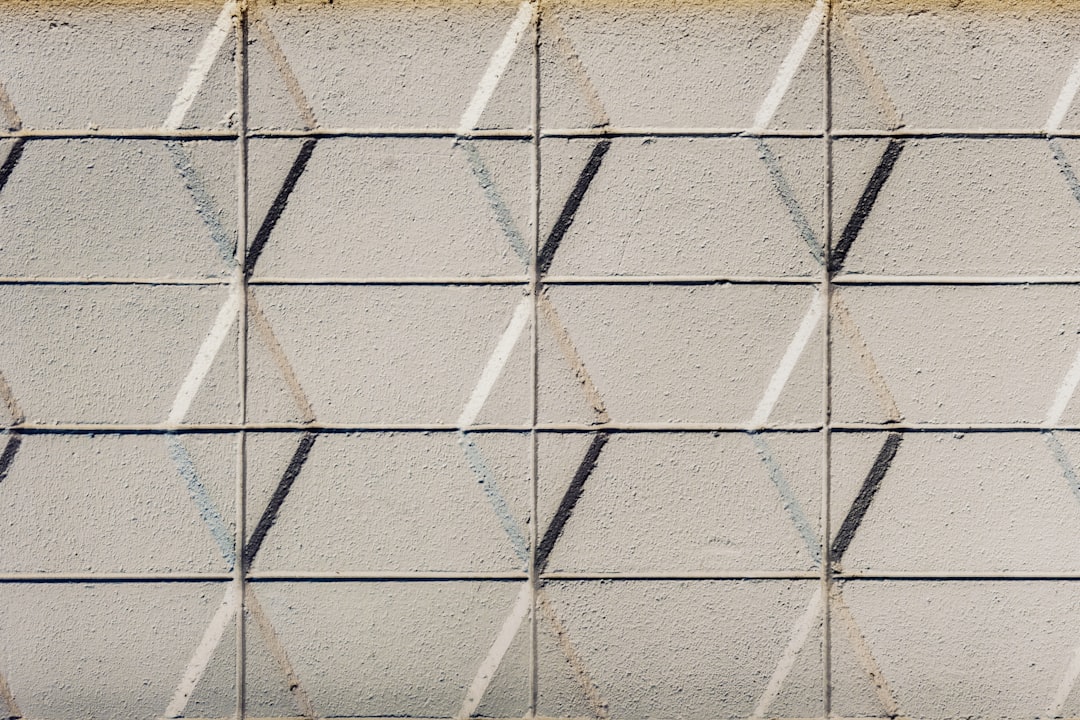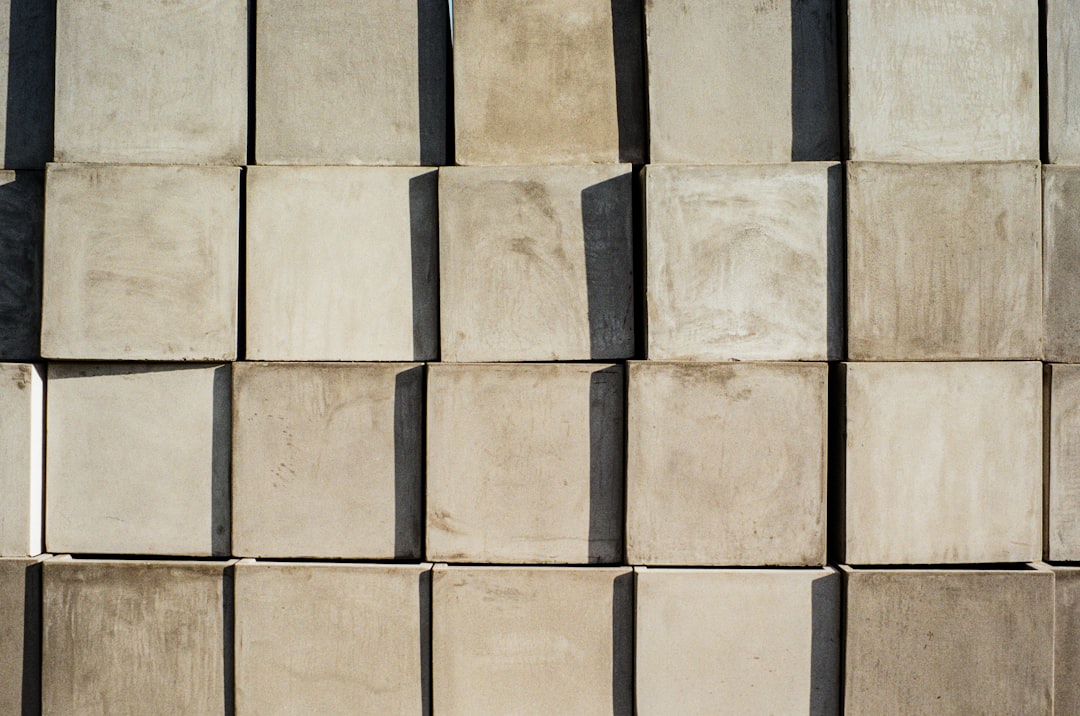

Engage prospects with a scan and streamline customer engagement with FREE QR code marketing tools by Sona – no strings attached!
Create a Free QR CodeFree consultation

No commitment

Engage prospects with a scan and streamline customer engagement with FREE QR code marketing tools by Sona – no strings attached!
Create a Free QR CodeFree consultation

No commitment
In today's digitally driven world, QR codes have evolved from a novelty to a strategic powerhouse that bridges offline engagement with online action. For ceramic tile contractors, QR codes present a solution to persistent challenges: traditional methods often fail to capture all leads, track high-value prospects accurately, or connect physical marketing collateral with timely digital follow-up. Modern QR platforms like Sona QR let contractors increase engagement, streamline project inquiries, and provide instant value to prospective clients without complex setups or app downloads.
Whether presenting at a trade show, distributing job portfolios, or guiding homeowners through maintenance best practices, QR codes can transform passive printed materials into interactive journeys. This not only elevates customer satisfaction but also empowers contractors with real-time data: which audiences browse resources, what services spark interest, and which touchpoints generate the highest-quality leads. The result is a measurable improvement in workflow efficiency and lead quality.
Unlocking the power of QR codes enables ceramic tile contractors to move beyond analog processes such as static brochures, paper appointment cards, or manual intake forms. With smart, trackable touchpoints, contractors can pre-qualify visitors, capture interest across the sales cycle, and attribute revenue with greater precision. The following sections explore how QR codes resolve longstanding pain points in customer engagement, lead capture, and growth for ceramic tile businesses.

QR codes uniquely bridge the gap between physical touchpoints and digital outcomes, making it easier for ceramic tile contractors to overcome the common frustrations of disconnected lead capture, missed follow-up opportunities, and reliance on outdated contact methods. In competitive markets, prospects often show interest by flipping through print brochures or admiring showroom displays, yet they leave no trackable footprint. Modern QR workflows help businesses tap into these moments and ensure every high-value visitor is logged, segmented, and actionable.
Start by mapping the journey from first impression to signed contract and then identify where QR codes can simplify action. Replace printed brochures that go cold with scannable galleries and project calculators. Shift from manual sign-up sheets to instant scan-to-booking workflows. Use QR codes on product packaging to bring buyers to care guides and warranty registration pages, then sync the resulting data to your CRM for future upsell and referral campaigns.
By modernizing legacy workflows, contractors minimize missed opportunities, accelerate response to early-stage interest, and capture signals from visitors who would otherwise remain anonymous. Sona QR supports this entire transformation, from fast code generation and branded design to analytics, segmentation, and CRM integrations.

Much of the ceramic tile contracting process still hinges on physical interactions: samples, brochures, and in-person consultations. While tactile experiences remain crucial, they create friction in the digital age. Potential clients often engage with marketing materials but never make their interest known, so contractors miss high-value prospects and valuable engagement signals. Outdated processes also slow outreach, leaving room for competitors to respond first.
QR codes solve these pain points by turning every print asset, showroom visit, or job site into a springboard for digital action. They help customers take the next step quickly, and they give contractors data for more intelligent follow-up. Whether you are aiming to increase quote requests, showcase high-end installations, or capture post-install feedback, QR codes offer a low-friction, high-impact pathway.
By bridging the gap between physical engagement and digital action, ceramic tile contractors can capture every expression of intent, improve customer experience, and move prospects from initial interest toward a signed contract with greater reliability.

Ceramic tile contractors face fragmented communication and gaps along the customer journey. QR codes adapt to these needs, offering flexible formats that match the action you want a prospect or client to take. Align the format with the outcome: appointment bookings, saved contact details, warranty registration, or immediate support.
Prioritize formats that reduce friction at key moments. For example, use a web link code on a sample board to launch a mobile-optimized gallery, or use a form code on a job-site sign to capture quote requests from neighbors while your work is top of mind. With Sona QR, you can generate and manage all of them in one place.
For ceramic tile contractors, web links, forms, and vCards are typically the highest-impact formats. Dynamic codes provide agility, supporting A/B tests and content updates without reprinting. Reserve static codes for unchanging destinations such as evergreen brochures or long-term PDF documents.

Growth often hides in high-traffic, low-data environments: showrooms, job sites, and product packaging. These touchpoints attract real interest yet rarely produce measurable signals. Strategic QR placements convert anonymous engagement into actionable opportunities, giving you visibility into which assets and locations produce the best results.
Start with your most frequented physical assets and customer interactions. Make scanning feel obvious and rewarding. For example, showcase a QR code beside a large-format porcelain slab that promises a 3D walkthrough of recent installations or a quick budget calculator. Then link the destination to a concise form to capture qualified interest at the right moment. On packaging and pallets, consider showcasing custom QR tiles to connect finished surfaces with care guides and inspiration.
By prioritizing these placements and capturing interaction data, you can fill the gaps left by traditional marketing, improve attribution, and focus on the channels and messages that reliably generate qualified leads.
Contractors often deal with disconnected analog touchpoints that delay response and let opportunities slip. QR codes make these moments trackable and actionable, transforming passive interest into measurable outcomes across the sales cycle. For additional ideas, see this overview of QR code marketing. Focus on a few high-impact use cases first, then expand as you gather performance insights.
Each use case should map to a specific action and a destination tailored to that action. Measure results through scan-to-form and scan-to-appointment rates, time to follow-up, and ultimate conversion to closed deals.
A well-designed set of QR use cases replaces slow manual processes with a data-driven approach. Contractors gain visibility into interest, shorten time to response, and reduce the risk of valuable leads falling through the cracks.
Every scan is a new data point that reveals intent, context, and timing. By deploying unique QR codes across touchpoints, you can automatically segment your audience and feed precise retargeting and nurture workflows. The result is a smarter pipeline built on actual behavior, not assumptions.
For ceramic tile contractors, segment audiences by role and stage: homeowners evaluating styles, designers comparing finishes, builders pricing commercial projects, and property managers seeking maintenance support. Then tailor your message accordingly. For example, a homeowner who scanned a code on a bathroom display should receive inspiration content and a consultation offer, while a builder who scanned a code on a commercial panel might receive technical specs and bid templates.
Use these segments to deliver content that respects the buyer’s context. Homeowners may prefer visual guides and budget calculators, designers may value sample ordering and finish comparisons, and contractors may need technical documentation and bid support. The better the match, the higher your conversion rate.
Even as contractors expand their marketing efforts, scattered touchpoints can result in disjointed experiences and unclear attribution. QR codes unify offline and online efforts, enabling real-time engagement and measurable outcomes across channels. With a centralized platform like Sona QR, you can manage all codes, monitor performance, and sync activity with your CRM and ad tools.
Plan QR integration alongside your campaign calendar. For a new product line launch, you might include QR codes in print ads, showroom displays, and direct mail pieces, all pointing to different landing pages tailored to each audience. This approach lets you compare channels directly and optimize while the campaign is live.
QR codes are the offline onramp to your digital marketing engine. They convert attention into action, and they unlock a layer of measurement across channels that were previously hard to quantify.
Launching QR initiatives requires clarity, consistency, and a feedback loop. Without a plan, teams risk untracked engagement, fragmented data, and missed follow-up windows. A checklist ensures codes are purposeful, placements are strategic, and performance is measured.
Treat QR deployments as you would any other campaign. Set clear goals, choose formats based on the action you want, and test thoroughly. Make scanning intuitive by pairing each code with a strong value proposition and CTA. Finally, build analytics dashboards that close the loop from scan to revenue.
Attribution is a common challenge for contractors. Teams often struggle to connect initial interest to booked consultations or signed contracts. QR codes help close this gap by turning offline engagements into trackable events that follow through to outcomes such as calls, appointments, proposals, and revenue.
Design your analytics to tell a complete story. Start by capturing scan details such as when and where they occur, then stitch those events to form fills, consultations, proposals submitted, and closed deals. Enrich your CRM with scan context so sales reps understand what sparked interest and can tailor conversations accordingly.
When each scan becomes a data-rich signal, you can finally prove the impact of offline assets, prioritize high-intent leads, and refine the customer journey for higher conversion.
Long-term success with QR campaigns requires intentional measurement, ongoing optimization, and cross-team alignment. Many setbacks, such as generic messaging or slow response times, are avoidable with a few focused practices. Choose tactics that match your most common media and buyer journeys.
Think beyond the first scan. Use automation and integrations to send the right message at the right time, and keep pages behind your codes fresh. Treat QR codes as part of your performance marketing stack, not a one-off experiment.
These practices turn QR codes into a consistent driver of qualified engagement, better attribution, and faster revenue.

Leading ceramic tile contractors are already using QR codes to fill data blind spots, improve follow-through with high-value prospects, and convert everyday interactions into measurable outcomes. These examples highlight a mix of placements, workflows, and analytics that deliver practical wins.
The common thread is synergy between physical assets and digital journeys. Each scan invites a purposeful action, and every destination is optimized for speed and relevance. The resulting data then fuels better retargeting and sales prioritization.
Use these ideas as starting points, then tailor them to your audience mix. Commercial clients may value technical data and safety certifications, while homeowners prefer visual inspiration and transparent pricing guidance.
QR codes deliver on their promise when they are thoughtfully implemented and aligned with daily operations. Even excellent creative can underperform if codes are hidden, destinations are slow, or follow-up is not coordinated. Avoid common mistakes and adopt a set of best practices that fit how your customers actually engage.
Keep a close eye on the post-scan journey. A code that leads to a generic homepage, a desktop-only PDF, or a long form will undercut the momentum you created. Instead, design every destination for mobile and ensure the next step is obvious and easy.
Properly executed, QR codes become a strategic asset that supports marketing, sales, and customer success. They help your team engage earlier, personalize outreach, and attribute wins to the assets and messages that work.
QR codes are more than shortcuts. They are strategic connectors that turn every physical surface into a digital entry point and every moment of interest into a measurable action. For ceramic tile contractors, QR-powered journeys close the gap between showrooms, job sites, and online experiences, creating a seamless path from discovery to decision.
Here is what they deliver at a glance:
Getting started is straightforward. Identify one or two high-impact use cases, generate dynamic codes with Sona QR, and deploy them on your most visible assets. Sync scan data to your CRM, build segments around intent, and iterate based on real performance. In a competitive market, the contractors who capture demand at the source and respond with speed and relevance are the ones who win. Sona QR gives you the tools to make that shift today. Start creating QR codes for free.
QR codes have transformed ceramic tile contractors from relying on traditional, static marketing into leveraging dynamic, measurable engagement tools. Whether it’s streamlining project access, enhancing client communication, or showcasing portfolio samples instantly, QR codes replace cumbersome processes with quick, mobile-friendly interactions that capture valuable data to optimize every customer touchpoint.
Imagine instantly providing clients with detailed tile specifications, installation guides, or maintenance tips—right at their fingertips—while tracking which materials generate the most interest. With Sona QR, you can create dynamic, trackable QR codes in seconds, update information on the fly without reprinting, and connect each scan directly to your business growth. No more missed leads or outdated collateral—just smarter, more efficient client engagement.
Start for free with Sona QR today and transform every scan into a seamless access point, a satisfied customer, or your next profitable project.
Choose a ceramic tile contractor who uses modern tools like QR codes to improve lead capture, customer engagement, and offers measurable outcomes across the project lifecycle.
Latest trends can be explored through digital galleries accessed via QR codes on brochures and sample boards, which offer filtered views by room type and budget.
QR codes can link customers to digital portfolios, care guides, warranty registrations, quote request forms, and maintenance resources, enhancing engagement and streamlining communication.
Ceramic tiles offer aesthetic appeal and durability, and QR codes help showcase technical specs, safety certifications, and large-format installations tailored for commercial clients.
Maintenance guides accessible via QR codes on product packaging provide care instructions, sealing reminders, and grout maintenance tips to ensure tiles stay in good condition.
Web links for portfolios, forms for quote requests or registrations, and vCards for contact sharing are the highest-impact QR code formats for ceramic tile contractors.
Place QR codes on showrooms, sample boards, job-site signage, product packaging, invoices, direct mail, vehicles, and trade show materials to capture interest at decision points.
QR codes transform passive print materials into interactive digital touchpoints that capture real-time data, enabling faster follow-up, lead qualification, and revenue attribution.
Success is measured by tracking metrics like scan-to-form completion, scan-to-appointment rates, reduced lead latency, and conversion rates linked to specific QR code placements.
Avoid generic CTAs, poor code placement, unoptimized mobile destinations, lack of staff training, and ignoring scan data, as these reduce engagement and the effectiveness of QR campaigns.
Integrate QR codes across brochures, direct mail, social media, trade shows, and job-site signage with unique codes per channel to unify offline and online efforts and enable measurable attribution.
Yes, QR codes on thank-you notes and warranty cards can capture referrals and post-install feedback, increasing repeat business and referral volume with trackable attribution.
For commercial projects, QR codes provide access to technical specs, safety certifications, bid templates, and project galleries tailored to builders and property managers.
Platforms like Sona QR offer fast code generation, branded design, analytics, segmentation, and CRM integrations to manage and optimize QR code campaigns.
Design QR destinations to be mobile-first, fast-loading, with clear next steps, short forms, and benefit-driven CTAs to maintain momentum and convert interest into action.
Use Sona QR's trackable codes to improve customer acquisition and engagement today.
Create Your FREE Trackable QR Code in SecondsJoin results-focused teams combining Sona Platform automation with advanced Google Ads strategies to scale lead generation

Connect your existing CRM

Free Account Enrichment

No setup fees
No commitment required

Free consultation

Get a custom Google Ads roadmap for your business






Launch campaigns that generate qualified leads in 30 days or less.
